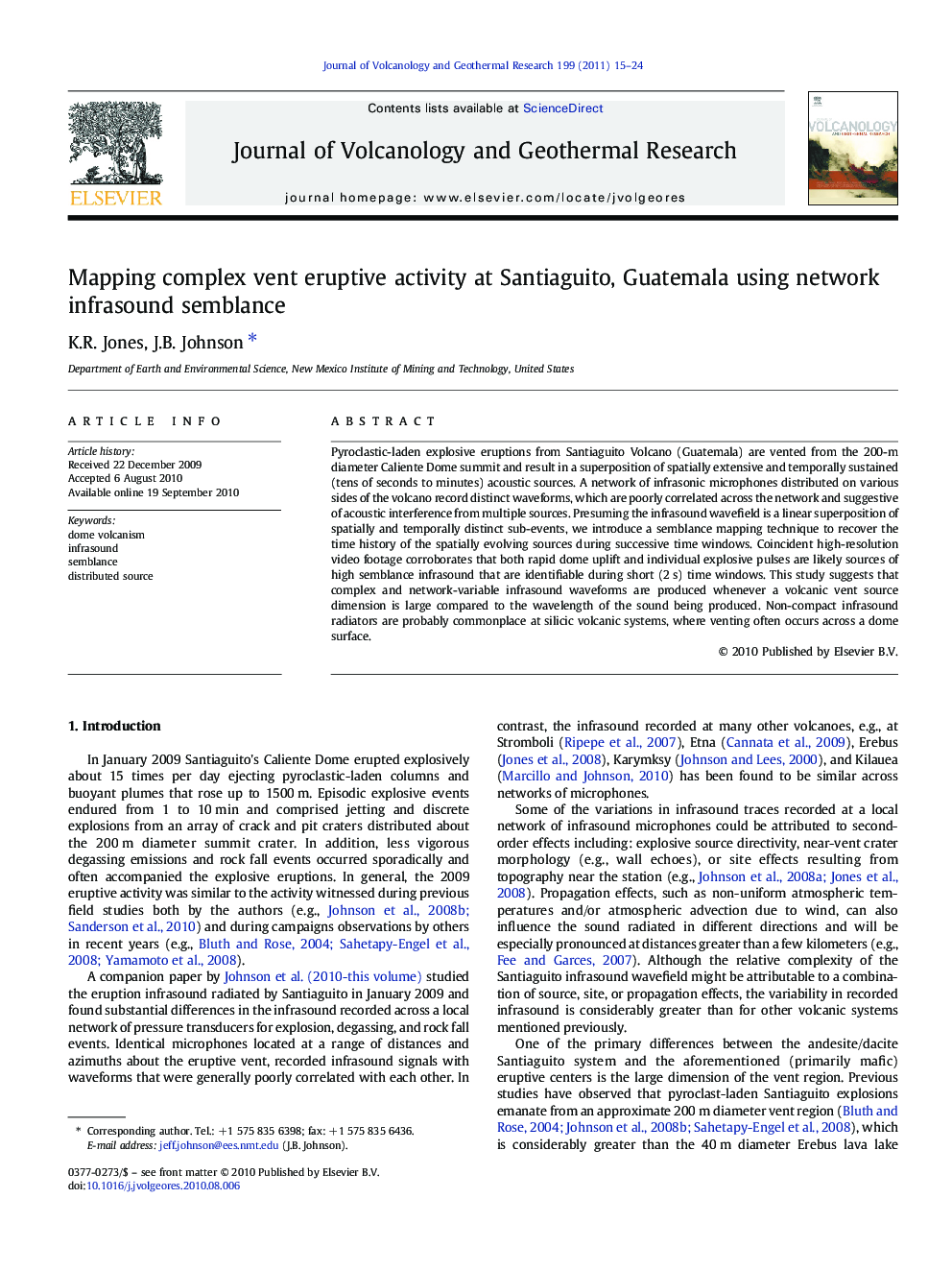| Article ID | Journal | Published Year | Pages | File Type |
|---|---|---|---|---|
| 4713935 | Journal of Volcanology and Geothermal Research | 2011 | 10 Pages |
Pyroclastic-laden explosive eruptions from Santiaguito Volcano (Guatemala) are vented from the 200-m diameter Caliente Dome summit and result in a superposition of spatially extensive and temporally sustained (tens of seconds to minutes) acoustic sources. A network of infrasonic microphones distributed on various sides of the volcano record distinct waveforms, which are poorly correlated across the network and suggestive of acoustic interference from multiple sources. Presuming the infrasound wavefield is a linear superposition of spatially and temporally distinct sub-events, we introduce a semblance mapping technique to recover the time history of the spatially evolving sources during successive time windows. Coincident high-resolution video footage corroborates that both rapid dome uplift and individual explosive pulses are likely sources of high semblance infrasound that are identifiable during short (2 s) time windows. This study suggests that complex and network-variable infrasound waveforms are produced whenever a volcanic vent source dimension is large compared to the wavelength of the sound being produced. Non-compact infrasound radiators are probably commonplace at silicic volcanic systems, where venting often occurs across a dome surface.
Research Highlights► Santiaguito Dome radiates complex infrasound during frequent (~ 1 per hour) pyroclastic-laden eruptive events. ► Semblance techniques using networked microphones are effective for mapping complex eruption sources. ► Temporal variation in source location is corroborated by video observations of eruptions.
